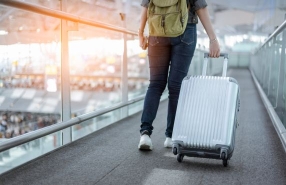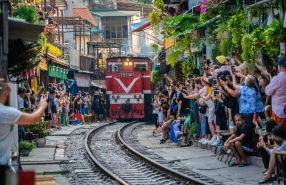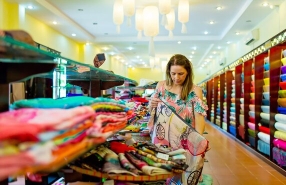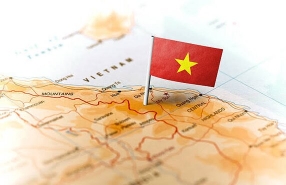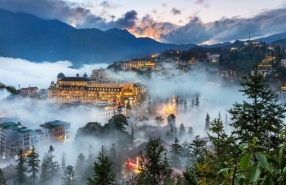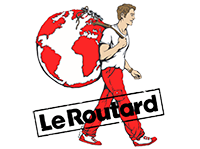Frequently Asked Questions For Traveling To Vietnam
Sunday, June 02, 2024
Useful infos

Vietnam, located in Asia, boasts stunning landscapes, lush nature, exquisite cuisine, and warm-hearted people. Despite these attractions, it remains relatively unknown to many around the world.
Due to this relative obscurity, potential travelers often have many questions. With over 20 years of experience in the tourism industry, we have compiled the most frequently asked questions for your trip to Vietnam.
Table of Contents
- 1. What are the must-see places in Vietnam? Things to do, discover, and see?
- 2. What budget should I plan for Vietnam?
- 3. What is the ideal month to visit Vietnam?
- 4. What is the average cost of a meal in Vietnam?
- 5. What is the most beautiful region in Vietnam?
- 6. What is the most picturesque place in Vietnam?
- 7. When does the rainy season occur in Vietnam?
- 8. When to admire the rice terraces in Vietnam?
- 9. How should I dress for a trip to Vietnam?
- 10. How do people greet in Vietnam?
- 11. How to express gratitude to a Vietnamese person?
- 12. How to behave in Vietnam?
1. What are the must-see places in Vietnam? Things to do, discover, and see?
Hanoi: The cultural capital with its Old Quarter, Vietnam Museum of Ethnology, and Hoan Kiem Lake.
Cultural Immersion in Mai Châu: Discover local life by visiting traditional villages like Na Phon, Nà Piềng, Nà Mèo, and Xăm Pà, and stay with local families.
Pù Luông: An ideal destination for authenticity seekers, featuring deep valleys, winding rivers, natural beauty, and tranquility, offering a full immersion in Vietnamese countryside.
Tam Cốc, Tràng An, Bái Đính Pagoda: Often called the "Inland Ha Long Bay" for its rice fields and rock formations. Trang An is a UNESCO World Heritage site located in Ninh Binh province, often referred to as the "Ha Long Bay on land" due to its stunning landscape of karst mountains and intricate cave systems. Bai Dinh Pagoda is the largest complex of Buddhist temples in Vietnam.
Ha Long Bay: A UNESCO World Heritage site known for its thousands of karst islands.
Sapa: A mountainous region in northwest Vietnam, famous for its spectacular terraced rice fields, majestic mountains, and ethnic villages.
Sapa: A mountainous region in northwest Vietnam, famous for its spectacular terraced rice fields, majestic mountains, and ethnic villages.
Hà Giang: Known for its karst plateaus, terraced rice fields, and vibrant local markets, offering an authentic and immersive experience.
Imperial City of Hué: A historical complex and UNESCO World Heritage site, which was the seat of power for the Nguyen emperors.
Ancient Town of Hoi An: A UNESCO World Heritage site with ancient houses, temples, and colorful buildings.
Mekong Delta: The floating markets of Cai Rang and Phong Dien are among the most famous, where you can see local trading boats.
Cai Rang Floating Market: Located in Can Tho in the Mekong Delta, it is one of the largest and most famous floating markets in Vietnam.
Phú Quốc Island: Known for its idyllic beaches, crystal-clear waters, and tropical landscapes, it is a popular destination for relaxation and adventure.
2. What budget should I plan for Vietnam?
Plan a budget of USD 90 - 100 per day per person to cover hotel, meals, transfers, entrance fees, and guides. The cost of living in Vietnam is about 50% lower than in US or Europe, but the local purchasing power is 65% lower. The estimated budget is USD 1400 per person for 2 weeks in Vietnam and USD 1800 per person for 3 weeks.
3. What is the ideal month to visit Vietnam?
The best time to visit Vietnam is from November to May, during the dry season. Temperatures are pleasant, around 29°C, with ideal conditions from January to May.
4. What is the average cost of a meal in Vietnam?
The cost of a meal in Vietnam ranges from $4 to $10 per person. The food is not only affordable but also delicious and healthy. For instance, a bowl of pho costs about $2-3, while a serving of grilled fish with white vermicelli costs around $7.
5. What is the most beautiful region in Vietnam?
Northern Vietnam stands out for its traditional culture, breathtaking landscapes, and delicious cuisine.
6. What is the most picturesque place in Vietnam?
Hoi An, a charming coastal town, is one of the most picturesque destinations in the country. Its historic center is filled with ancient buildings, temples, and colorful houses that attract many visitors.
7. When does the rainy season occur in Vietnam?
The rainy season extends from June to September in the north and south, and from August to January in the center. Despite the rainfall, sunny days are frequent, perfect for stunning photos.
8. When to admire the rice terraces in Vietnam?
The terraced rice fields are beautiful from late May to June and from early October to November. The fields transition from vibrant green to golden yellow just before the harvest.
9. How should I dress for a trip to Vietnam?
Opt for light and short clothing like shorts, dresses, and T-shirts. Also, bring dressier outfits for outings, a hat for the sun, and a swimsuit. For visiting pagodas and temples, wear long and modest clothing.
10. How do people greet in Vietnam?
In Vietnam, people greet each other with a handshake, although women often prefer a nod. Cheek kissing is not common.
11. How to express gratitude to a Vietnamese person?
Hello: Xin chào
Goodbye: Chào tạm biệt
Thank you: Cảm ơn
Fine, thank you: Khỏe, cảm ơn
Excuse me, sorry: Xin lỗi
Goodbye: Chào tạm biệt
Thank you: Cảm ơn
Fine, thank you: Khỏe, cảm ơn
Excuse me, sorry: Xin lỗi
12. How to behave in Vietnam?
It is important to stay calm in public. Vietnamese people appreciate tranquility, so avoid outbursts of anger and large displays of emotion.
Conclusion
With a 2-week or 3-week itinerary in Vietnam, you will have ample time to explore the country from north to south or vice versa. You can fully enjoy the beauty, cultural richness, delicious cuisine, and meet the locals, providing an immersive and memorable experience of Vietnam.
With a 2-week or 3-week itinerary in Vietnam, you will have ample time to explore the country from north to south or vice versa. You can fully enjoy the beauty, cultural richness, delicious cuisine, and meet the locals, providing an immersive and memorable experience of Vietnam.
>>>It is advisable to refer to the following:
Related travel guide
Other similar articles
CUSTOMIZABLE BY LOCAL EXPERTS
Personalized trip at the original price!
REFUND GUARANTEE
We believe in our work and promise to give you money back.
GOOD PRICE / QUALITY
95% satisfied more than expected!
24/7 LOCAL SUPPORT
We are always available online to provide assistance at any time.
Most read articles
Autour Asia is highly recommended on
Embracing the mission of "Satisfied more than expected" and providing authentic experiences, we have received numerous recommendations on reputable travel forums:












